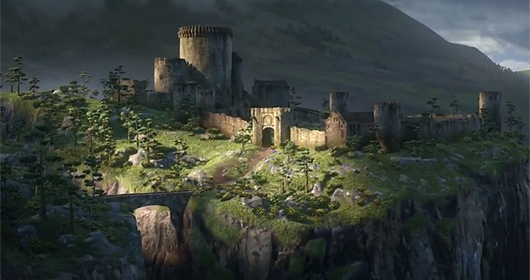
A medieval castle was the fortified home of an important person, such as a lord or king. The medieval period, also called the Middle Ages, lasted from the 5th century to the end of the 15th Century. During this time, many castles were built in Europe and the Middle East. They ranged from simple wooden enclosures to vast stone palaces. A castle allowed a lord to control the surrounding land. It also kept his family and riches safe from rivals while he was away at war, fighting as a knight for the king. Read a short description of the different parts of a castle.
Walls: thick stone walls kept the castle’s inhabitants safe from attack.
Battlements: the up-and-down stonework on top of the castle walls is known as battlements. The knights and soldiers defending the castle could shelter behind the battlements if the castle was under attack.
Great hall: this was the feasting room, where the lord held banquets for important guests.
Lord’s chambers: the lord and his family had private rooms in the highest, lightest and most comfortable part of the castle.
Gardens: the castle had vegetable gardens and orchards and sometimes these were inside the castle walls. Some animals were kept close to the castle kitchens to provide fresh meat.
Banners: long flags called banners showed the symbol of the lord of the castle. They were used to identify noble families and knights in medieval times. This is called heraldry.
Towers: round tall towers were used to keep the castle protected when the enemies attacked.
Dungeons: Prisoners could be locked away underground in a dungeon, with no hope of escape.
Drawbridge: a wooden bridge that can be pulled up to stop people from entering a castle.
Moat: a deep wide hole, usually filled with water, which is around a castle used as a defence

